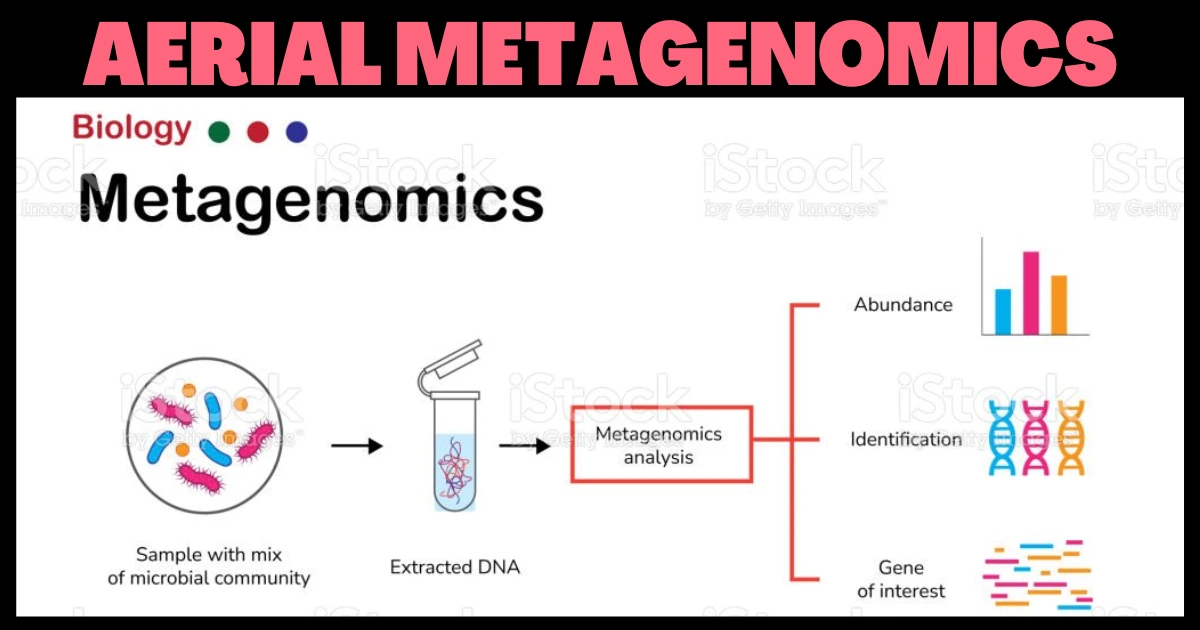Aerial Metagenomics: Meaning & Method
In the quest to understand the intricate web of life on our planet, scientists have explored various ecosystems, from the depths of the oceans to the heart of dense rainforests.
However, one frontier that has remained largely unexplored until recent years is the Earth’s aerial biosphere. Aerial metagenomics, a cutting-edge field of research, has emerged as a powerful tool in unraveling the mysteries of this hidden realm.
What is Aerial Metagenomics?
Aerial metagenomics is a branch of environmental genomics that focuses on studying genetic material present in the atmosphere. It involves the collection and analysis of DNA, RNA, and other genetic material from airborne particles such as dust, pollen, microorganisms, and even minute fragments of plants and animals. This approach enables researchers to gain insights into the diversity, composition, and functions of airborne microbial communities.
Methods Behind Aerial Metagenomics
1. Sample Collection
Aerial metagenomics begins with the collection of samples from the atmosphere. This can be done using specialized air samplers, drones, aircraft, or even high-altitude balloons equipped with sophisticated sampling equipment. These devices capture particles from the air, preserving the genetic material for subsequent analysis.
2. DNA Extraction and Sequencing
Once the samples are collected, scientists use advanced molecular biology techniques to extract DNA and RNA. Next-generation sequencing technologies are then employed to generate vast amounts of genetic data. This high-throughput approach provides researchers with a detailed snapshot of the genetic diversity within the aerial environment.
Diversity of Aerial Microbes
1. Bacterial Abundance
Aerial metagenomics has revealed an astonishing abundance and diversity of bacteria in the atmosphere. These microorganisms play crucial roles in various ecological processes, including nutrient cycling, decomposition, and even influencing weather patterns.
2. Viral World
Viruses are a ubiquitous and highly diverse group of genetic elements in the atmosphere. They range from bacteriophages that infect bacteria to viruses that impact eukaryotic organisms, including plants and animals. Understanding the viral component of the aerial microbiome is crucial for comprehending ecosystem dynamics and potential impacts on human health.
3. Fungal Communities
Fungi are another essential component of the aerial environment. Aerial metagenomics has unveiled a diverse range of fungal species, including those that have the potential to impact human health through the release of spores and bioaerosols.
Applications of Aerial Metagenomics
- Aerial metagenomics is a powerful tool for monitoring environmental health. By analyzing the genetic composition of the atmosphere, researchers can gain insights into the presence of pathogens, allergens, and indicators of pollution.
- Studying the aerial microbiome allows scientists to understand how microbial communities vary across different regions and climates. This information is crucial for tracking the spread of microorganisms and predicting their response to environmental changes.
- Aerial metagenomics has implications for human health, especially in understanding the transmission of airborne diseases. By characterizing the genetic diversity of microorganisms in the atmosphere, researchers can better prepare for potential outbreaks and develop strategies for mitigating health risks.
Also Read: Neo-Determinism, Determinism & Possibilism with Examples
Conclusion
Aerial metagenomics represents a groundbreaking approach to exploring the hidden world above us. By unraveling the genetic mysteries of the aerial environment, scientists are gaining unprecedented insights into the complexity and interconnectedness of life on Earth.
As this field continues to evolve, it holds the promise of revolutionizing our understanding of ecosystems and their impact on global processes.
Thank You!

